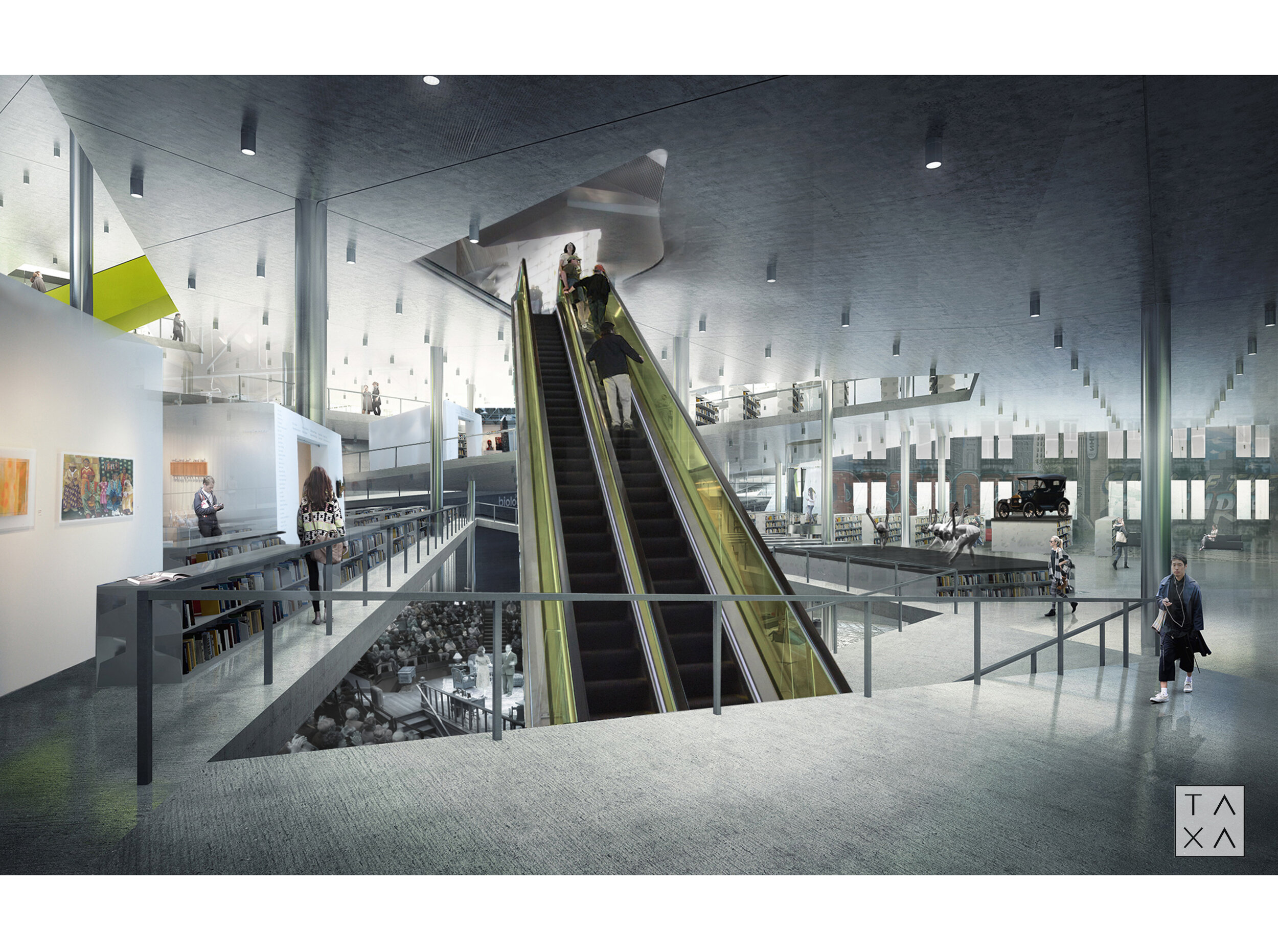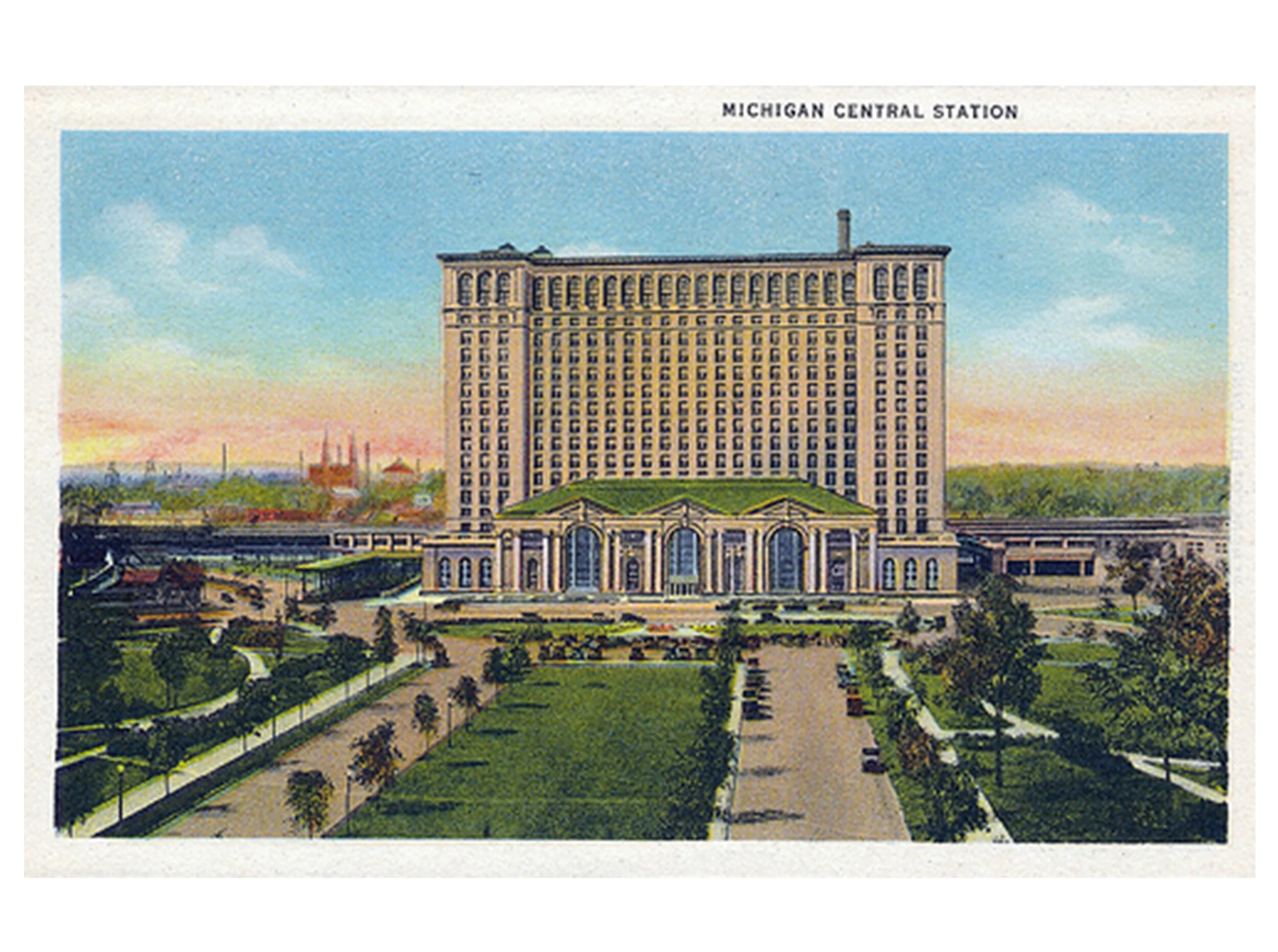
Michigan Central Station
Year / 2017
Location / Detroit, Michigan, USA
Project Type / Adaptive Re-use
Building Type / Hospitality and Leisure
Units / 180
Status / Competition
“A century ago, on October 7 1913, engineers built a rudimentary system using a rope and wince to pull a new Ford Model T past 140 workers at a brand new factory dubbed the Crystal Palace.”
The Detroit Station for the Arts recalls the performance of the assembly line, in its radical reformulation of both manufacturing and society.
While renovations often aim for respectful continuity with existing architecture, the buildings of Detroit have been designed for jobs and services which no longer command utility. Thus, for the Motor City to survive, both socially and economically, we must move away from the conventional reprogramming of existing spatial conditions, and toward a disciplinary confrontation with spatial types themselves.
As a process of building renewal, we propose to cannibalize the host structure’s stacked floor plates, by inserting an 11-storey escalator with varying degrees of spatial colonization. The sloping protagonist redirects the vertical behavior of the existing train station to accommodate the addition of new spatial weights and programmatic forces. The resulting urban composite is continually redefined through a structural symbiosis of old and new.
As the extant architecture implies regularity and repetition, the diagonal escalator volume is meant to displace programmatic expectation, creating ramped surfaces and split-levels where hotel, artist workshops, and public space collide to form a true cultural interchange. As permanent residents and hotel guests enter through the short elevation, they lock-in to a minute-long track threading through showrooms, artist lofts and changing exhibits. The art zones split and interweave to occupy available space in and around the diagonal core. The new distributions of public and private space make program zones only periodically specific, with shifting episodes of visual connection and spatial awareness of neighboring occupant-types.
Just as layers of graffiti claim and reclaim moments of a building’s surface, these sectional cusps and overlaps result in varying orientations and claims to different program bodies: depending more on the subjectivity of the user, than of a fixed architectural prescription.
Similar to historic models of industrial and artistic practice, architectural types are not abstract, timeless ideals, but rather specific artifacts that must be reconfigured to remain economically and culturally sustainable. Just as the assembly line shifted modes of production in a paradigmatic way, The Detroit Station for the Arts contrasts old and new to launch an urban need for typological revision.










